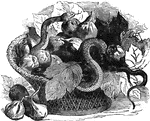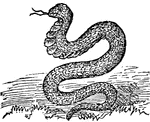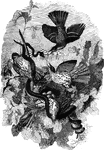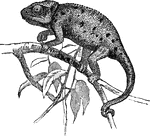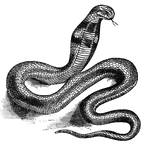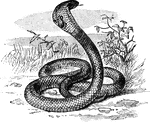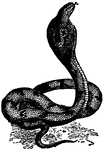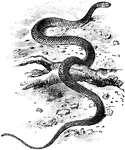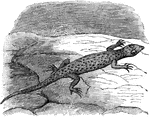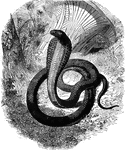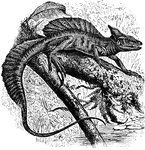The Snakes and Lizards ClipArt gallery offers 147 illustrations of the order Squamata, which includes snakes, lizards, geckos, iguanas, skinks, and worm lizards.
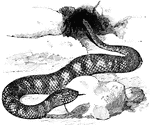
Acanthophis
"A genus of venomous serpents, they are of small size, live on dry land, and feed upon frogs, lizards,…

Agama
"Agama brachyura-A family of saurian reptiles, order LAcertilia, superfamily Agamoidea."-Whitney, 1902
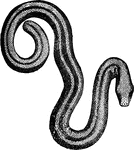
Brown amphisbaena
Ranging from eighteen to twenty-four inches long, the brown amphisbaena feeds on worms and insects,…
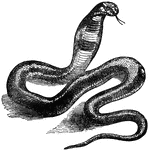
Asp
"A venomous serpent, the name of which has come down from ancient times; the vague descriptions of ancient…

Tree Asp
The narrow ended dendroaspis, otherwise known as the tree asp, tree snake, or mamba. It is about 6 feet…
Boa constrictor
This gigantic snake kills its prey by constricting around it, squeezing it to death, then swallowing…
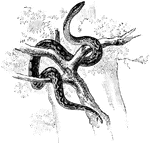
Ringed Boa
The Ringed Boa (Epicrates cenchria) is a non-venomous snake in the Boidae family of boas.

Chameleon
This type of lizard lives on trees, clinging to the branches by their feet and prehensile tails. They…

Chameleon
Large lizards that belong to one of the best known lizard families. They are famous for their ability…
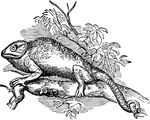
Chameleon
"A genus of saurian reptiles, constituting a distinct family, of very peculiar form and structure, and…

Common chameleon
Measuring between sixteen and eightenn inches long, the common chameleon of Europe is native to India…

Common Chameleon
The common chameleon (Chamaeleo chamaeleon) is a lizard that is well known for its camouflage ability.

Head of Chameleon
"Chameleon is a genus of reptiles belonging to the Saurian or lizard-like order, a native of parts of…
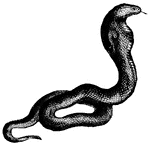
Cobra
When irritated, the neck of a cobra swells at the same time it raises the front part of its body vertically,…

Cobra Head
Cobras are venomous snakes of the familys Elapidae, of several genera, but particularly Naja. (Non-cobra…
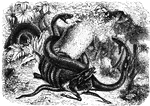
Boa constrictor
"The boa constrictor grows to great size, and greatly resembles the python in its habits." — Goodrich,…

Copperhead
A snake of rather small size, usualy under two feet and of a dull pale chestnut or hazel color with…

Dipsa
Dipsa is a tiny, extremely poisonous snake from Medieval bestiaries. They were said to be said to be…

Flying dragon
The flying dragon gets its name from its ability to glide for short distance using a thin membrane.

Flying Dragon
About 4 inces in length and has a long slender tail. It has a large frill on each side of its body,…

Flying Dragon
Draco volans, or the Flying Dragon, is a member of the genus of gliding lizards Draco. It can spread…
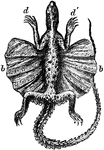
Red-Throated Dragon
"The Red-Throated Dragon shows a large membranous expansion (b b) situated between the anterior (d d)…

Emerald Tree Boa
Xiphosoma Caninum or Corallus caninus is a non-venomous boa species found in the rainforests of South…
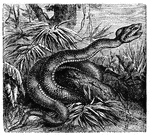
Fer-de-Lance
"The Viperine Snakes have a long, perforated, erectile fang on the maxillary bone, which is extremely…

Flying lizard
This type of lizard uses their wings like a parachute when they throw themselves upon their prey from…
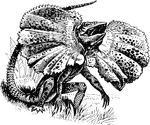
Frilled Lizard
The Frilled Lizard is so called because of the large ruff of skin which usually lies folded back against…
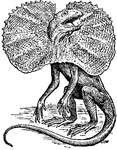
Frilled Lizard
Found in Oueensland and other parts of Australia, this lizard belongs to the family Agamidae. It reaches…
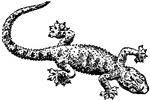
Gecko
A gecko is a small, four-footed member of the lizard family Geckonidae. Geckos are widely distributed…
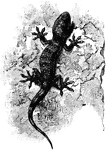
Tokay Gecko
The Tokay Gecko (Gekko gecko) is a lizard in the Gekkonidae family of geckos. It was once known as the…

Wall gecko
Found throughout Southern Europe, the wall gecko averages about six inches in length. It draws its name…

Glass-snake
Found in the woods of the Southern States, the glass-snake has the head of a lizard, but the body resembles…
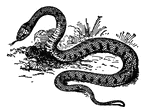
Grass Snake
Its color is olive-gray or brown above, with black bands and spots, and checkered black and white beneath.…

Hog Nosed Snake
A dweller in high, dry upland fields, where the soil is so slightly compacted that burrowing is easy,…

Iguana
Iguanas are characterized by a very large thin dew lap under the neck, a double row of small palatal…
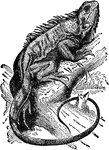
Iguana
"Iguana is a genus of saurian reptiles, natives of Brazil, Cayenne, the Bahamas, and neighboring localities…


